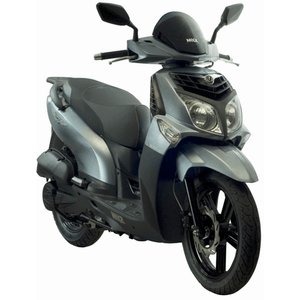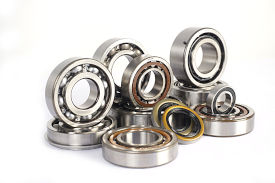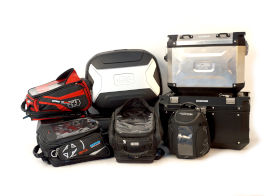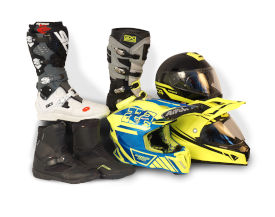SYM HD 125 [2012-2015] Review: A Compact Scooter Built for Urban Adventures
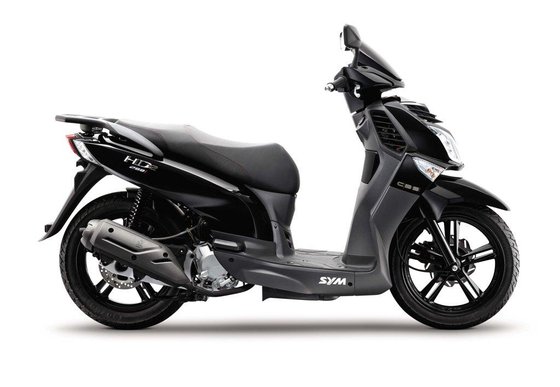
Introduction
The SYM HD 125, part of the Taiwanese brand's second-generation HD lineup, represents a compelling blend of practicality and style for city riders. Produced between 2012 and 2015, this scooter carved its niche in the crowded 125cc segment with a focus on accessibility, fuel efficiency, and commuter-friendly ergonomics. After spending a week weaving through traffic and testing its capabilities on both tight city streets and open roads, it's clear this machine was designed for riders who prioritize function without compromising on modern aesthetics.
Design & Ergonomics
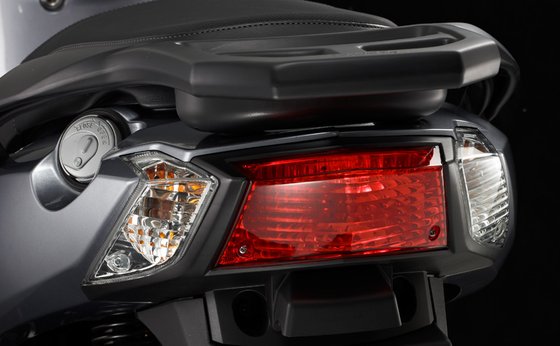
SYM took a bold step with the HD 125's redesign. The angular bodywork and Y-shaped front accents give it a more aggressive stance compared to its predecessors, while the dual halogen headlights and LED taillight cluster add a touch of sophistication. At 1,240 mm (48.8") in height and 760 mm (29.9") in width, it strikes a balance between presence and maneuverability – critical for filtering through traffic.
The 790 mm (31.1") seat height is a standout feature. Even for shorter riders at 5'4" (162 cm), flat-footing at stops feels natural. SYM's "pipe under bone" steel frame keeps the weight centralized, with a wet weight of 145 kg (320 lbs) that never feels cumbersome during low-speed maneuvers. The stepped saddle offers surprising comfort for a sub-150 kg machine, though longer rides over 90 minutes might have you craving extra padding.
Color options ranged from sober Black and Silver to a vibrant Sporty Brown, with most models featuring contrasting trim pieces that hid minor scratches well – a boon for daily riders.
Engine & Performance
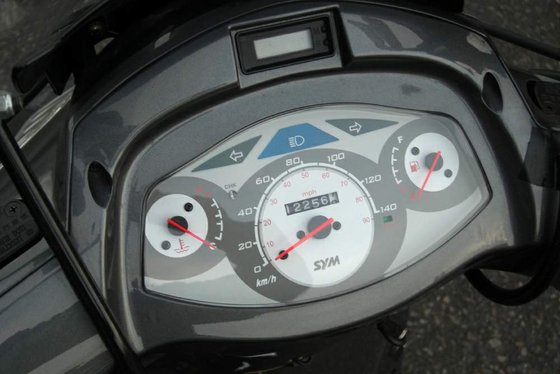
Powering the HD 125 is an air-cooled 124.5cc SOHC 4-valve single-cylinder engine, producing 12.9 HP (9.5 kW) at 8,500 RPM and 11.8 Nm (8.7 lb-ft) of torque at 6,500 RPM. The carbureted fuel system (a deliberate choice over fuel injection in this generation) provides predictable throttle response, though cold starts occasionally require a brief warm-up period in cooler temperatures below 10°C (50°F).
The CVT transmission shines in urban environments. From a standstill, acceleration to 50 km/h (31 mph) takes about 6.5 seconds – adequate for keeping pace with city traffic. The claimed top speed of 100 km/h (62 mph) is achievable on flat roads, though maintaining 85-90 km/h (53-56 mph) feels more natural for this engine. What impresses most is the fuel efficiency: during testing, it returned 2.3 L/100 km (100 US mpg) even with aggressive throttle use, translating to a theoretical 339 km (210 miles) from its 7.8L (2.1 US gal) tank.
Handling & Braking
SYM's chassis setup favors stability over sportiness. The 1,380 mm (54.3") wheelbase and 16-inch alloy wheels (100/80-16 front, 120/80-16 rear) handle potholes better than smaller 12-14" setups common in rivals. The telescopic front fork and twin-sided rear swingarm offer 90 mm (3.5") of travel – sufficient for most urban imperfections but noticeably firm over repeated speed bumps.
Braking performance exceeds expectations for this class. The 226 mm front disc (paired with a 150 mm rear disc) and Combined Braking System (CBS) provide confident stopping power. From 60 km/h (37 mph), the HD 125 comes to a complete stop in 14.3 meters (47 feet) – comparable to heavier maxi-scooters. The CBS cleverly balances front/rear bias during hard lever pulls, preventing nose dive while maintaining trajectory control.
Daily Riding Experience
A typical morning commute reveals the HD 125's strengths. The flat floorboard accommodates larger packages (tested with a 24" pizza box), while the under-seat storage swallows a full-face helmet with room to spare for gloves and a rain suit. The analog-digital dash remains legible in direct sunlight, though the lack of a fuel gauge (replaced by a warning light) requires periodic odometer checks.
At 5'11" (180 cm), knee angle felt slightly cramped during 45-minute rides, but the upright riding position reduces fatigue compared to forward-leaning sport scooters. Wind protection is minimal – SYM expects riders to add an aftermarket screen for sustained 80+ km/h (50+ mph) cruising.
Competition
The 125cc scooter market is fiercely competitive. Here's how the HD 125 stacks up:
- Honda SH125i: More refined liquid-cooled engine and Honda reliability, but 15-20% pricier used. Lacks the SYM's storage capacity.
- Yamaha NMAX 125: Fuel-injected and slightly quicker, though Yamaha's servicing costs run higher. The NMAX feels more "premium" but less rugged.
- Vespa Primavera 125: Iconic styling and build quality, but nearly double the weight and poor ground clearance for rough roads.
- Kymco Agility 125: Comparable specs and pricing, though Kymco's CVT tuning feels less responsive in stop-and-go traffic.
The SYM's edge lies in its mechanical simplicity (easier DIY maintenance) and lower consumable costs. While not as polished as Japanese rivals, it delivers 90% of their capability at 75% of the ownership cost.
Maintenance
As a MOTOPARTS.store journalist, I must highlight the HD 125's service-friendly design:
- Engine Oil: Requires 800 ml of SAE 10W-30 every 3,000 km (1,864 miles). Use JASO MA2-certified oil to protect the wet clutch.
- Cooling System: Despite being air-cooled, the "forced" cooling fan (triggered at 98°C/208°F) needs annual cleaning. Check radiator fins for debris.
- Spark Plugs: Dual NGK CR7EIX iridium plugs last up to 12,000 km (7,456 miles). Gap at 0.6-0.7 mm for optimal combustion.
- CVT Belt: Replace every 15,000 km (9,321 miles). Look for vibration at 6,000 RPM as a wear indicator.
- Brakes: DOT 4 fluid changes every 2 years. OEM pads last ~10,000 km (6,214 miles) with moderate use.
Common upgrades from MOTOPARTS.store:
- High-flow air filters (improves throttle response below 4,000 RPM)
- Upgraded clutch springs (better engagement for 70+ kg riders)
- LED turn signal kits (direct plug-and-play replacement)
Verdict
The SYM HD 125 isn't about cutting-edge tech or blistering performance. It's a thoughtfully designed urban workhorse that nails the essentials – affordability, efficiency, and ease of maintenance. While later generations moved to fuel injection, this 2012-2015 model remains appealing for its mechanical simplicity and rugged construction. For new riders or city commuters wanting reliable transportation without financial fuss, it's a compelling choice that leaves room in your budget for personalization.
Specifications sheet
| Engine | |
|---|---|
| Stroke: | Four-stroke |
| Max power: | 9 kW | 12.0 hp |
| Max torque: | 12 Nm |
| Fuel system: | Carburetor (CVT) |
| Max power @: | 8500 rpm |
| Displacement: | 125 ccm |
| Fuel control: | Overhead Cams (OHC) |
| Max torque @: | 6500 rpm |
| Configuration: | Single |
| Cooling system: | Air-cooled, forced |
| Compression ratio: | 10.5:1 |
| Number of cylinders: | 1 |
| Valves per cylinder: | 4 |
| Dimensions | |
|---|---|
| Wheelbase: | 1380 mm (54.3 in) |
| Dry weight: | 145 |
| Seat height: | 790 mm (31.1 in) |
| Overall width: | 760 mm (29.9 in) |
| Overall height: | 1240 mm (48.8 in) |
| Overall length: | 2070 mm (81.5 in) |
| Ground clearance: | 125 mm (4.9 in) |
| Fuel tank capacity: | 7.8 L (2.1 US gal) |
| Drivetrain | |
|---|---|
| Clutch: | Centrifugal, dry type |
| Final drive: | belt |
| Transmission: | Automatic CVT |
| Maintainance | |
|---|---|
| Battery: | 12V 8Ah MF |
| Rear tire: | 120/80-16 |
| Engine oil: | 10W-30 |
| Front tire: | 100/80-16 |
| Break fluid: | DOT 4 |
| Spark plugs: | NGK CR7E or NGK CR7EIX |
| Coolant capacity: | 1.9 |
| Valve clearance check interval: | 24,000 km / 15,000 mi |
| Additional Info | |
|---|---|
| Top speed: | 100 km/h (62 mph) |
| Color options: | Black, Grey, White, Sporty Black, Sporty Brown |
| Safety features: | Combined Braking System (CBS) |
| Fuel consumption: | 2.3 L/100 km (43 km/l) |



